Have you ever wondered how to spot a fake ID? Whether you’re a bouncer, liquor store owner, or you work in security, you need to know how to spot a fake ID. Plenty of fake IDs are poorly made and easy to spot. However, don’t get cocky. Counterfeiters are more crafty than ever. With new technology and sophisticated techniques, they’ve kept up with the latest security measures and fooled the experts. But, even with the upgraded fake IDs, there are plenty of simple ways to spot the fake from the real. Here are 25 Simple Ways To Tell If An ID Is Fake.

Look for the Real ID
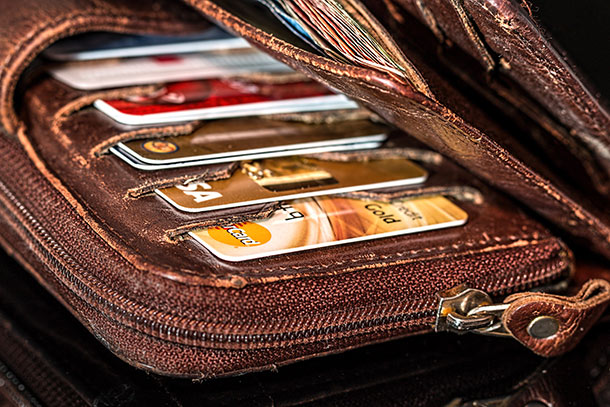 Source: https://billypenn.com/2015/04/09/philly-bouncers-bust-20-under-agers-a-night-how-to-spot-and-fight-fake-ids/
Source: https://billypenn.com/2015/04/09/philly-bouncers-bust-20-under-agers-a-night-how-to-spot-and-fight-fake-ids/ When the person reaches for their ID in their wallet or purse, be extra careful to see if you can spot their real ID hanging out in a pocket somewhere. Sometimes they even will hand over their real ID on accident.
Check Body Language
 Source: https://billypenn.com/2015/04/09/philly-bouncers-bust-20-under-agers-a-night-how-to-spot-and-fight-fake-ids/
Source: https://billypenn.com/2015/04/09/philly-bouncers-bust-20-under-agers-a-night-how-to-spot-and-fight-fake-ids/ Most people can have the best fake ID, but their body language will give themselves away. If they show signs of being nervous, like weird eye contact, ask them their address, and they might get even more uncomfortable.
Horoscope
 Source: https://careertrend.com/how-8525347-spot-fake-missouri-ids.html
Source: https://careertrend.com/how-8525347-spot-fake-missouri-ids.html It’s not foolproof, but if you have doubts the ID is real, then ask the person what their horoscope sign is based on the birth date of the card.
Compare the ID with Another
 Source: https://www.wikihow.com/Spot-a-Fake-I.D.
Source: https://www.wikihow.com/Spot-a-Fake-I.D. If you have a valid copy of an ID on hand, you can compare it to the one you’re given to ensure it’s valid. For instance, if the ID they gave you is thinner than the real one, that’s usually a red flag it’s a fake.
Check Grammar
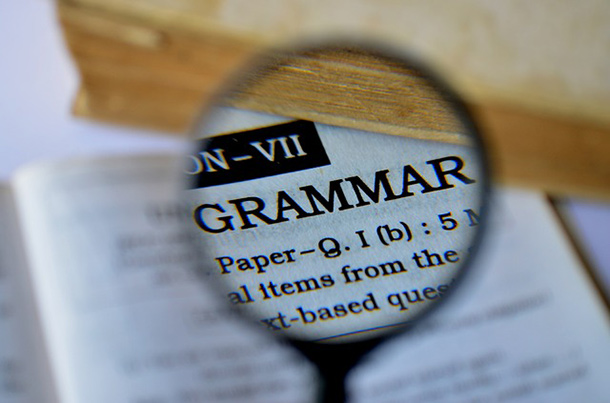 Source: https://www.wikihow.com/Spot-a-Fake-I.D.
Source: https://www.wikihow.com/Spot-a-Fake-I.D. Believe it or not, many fake IDs still get basic grammar wrong and could misspell a state abbreviation or address. So, keep a sharp eye out for those mistakes.
Compare the Photo
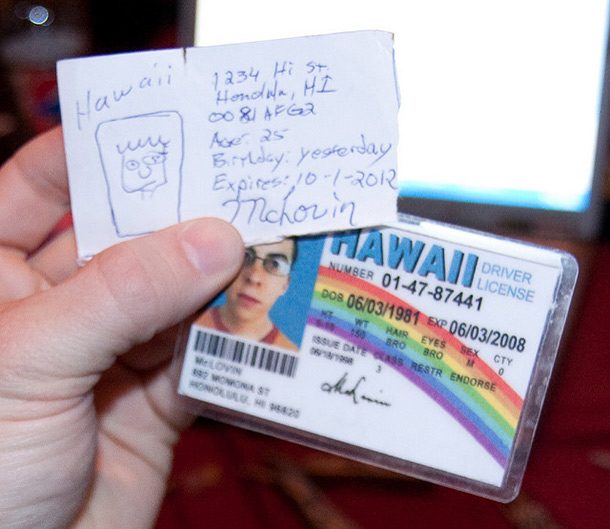 Source: https://www.wikihow.com/Spot-a-Fake-I.D., https://www.driverslicenseguide.com/5-steps.html
Source: https://www.wikihow.com/Spot-a-Fake-I.D., https://www.driverslicenseguide.com/5-steps.html While people may change hairstyles, get earrings, or wear a new pair of glasses, generally they should look the same as their photo. Look for things that don’t change much like nose, ears, eyes, eyebrows, and chin.
Look at the Description
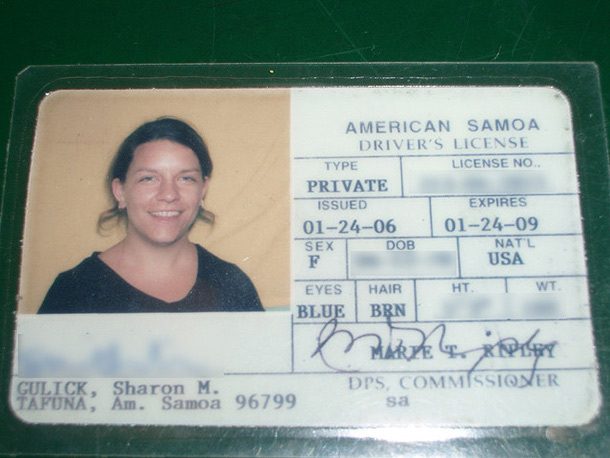
Other than checking to see if the person matches the photo, it’s not a bad idea to check the description information, such as eye color and hair color.
Most Used States
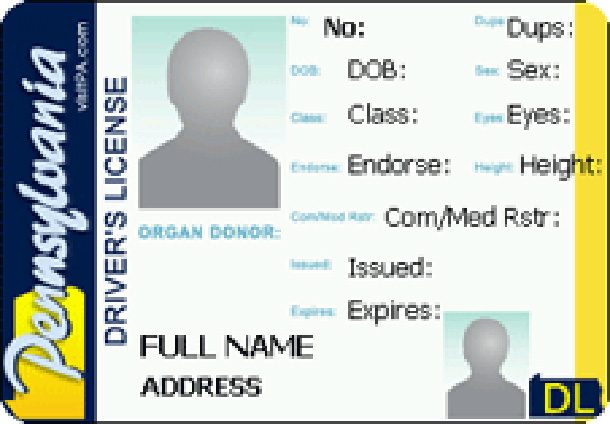 Source: https://www.society19.com/bouncer-insight-how-to-spot-a-fake-id/
Source: https://www.society19.com/bouncer-insight-how-to-spot-a-fake-id/ The most faked IDs in the United States are Florida, Pennsylvania, Connecticut, and Illinois. If you ever see these IDs, especially if they’re out-of-state, immediately be skeptical and check for the quick and easy signs that it’s fake.
Height and Weight
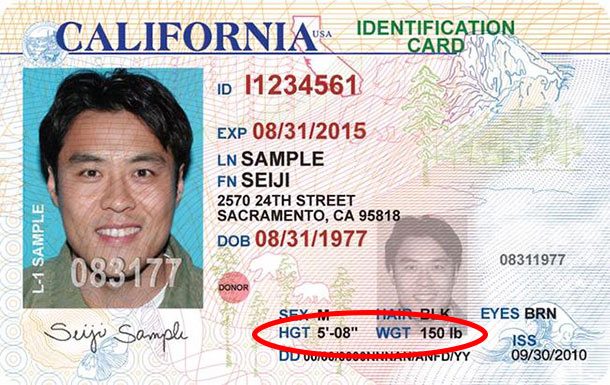 Source: http://www.sellerserver.com/Illinois/checking-ids.html
Source: http://www.sellerserver.com/Illinois/checking-ids.html Look at the height and weight of the card and see if they come close to that description. If they look substantially off from what is on the card, you can ask them what their height and weight is. If the information they give you plus their description doesn’t match up, then it’s likely a fake.
Signature
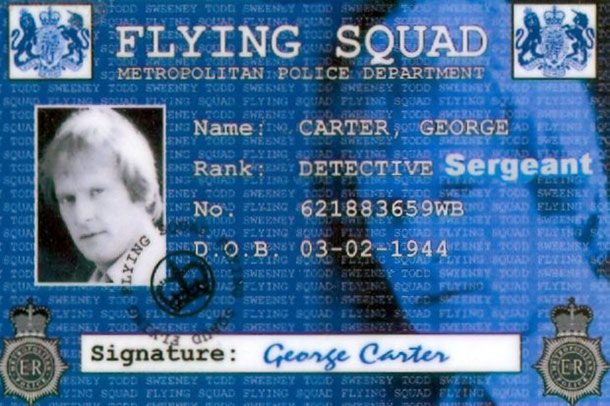 Source: https://www.society19.com/bouncer-insight-how-to-spot-a-fake-id/
Source: https://www.society19.com/bouncer-insight-how-to-spot-a-fake-id/ Real IDs never have a good looking signature. They’re usually a couple of line squiggles because it’s so hard to write on the digital pad they make you use. So, if the ID has a signature that’s too perfect, like a font used in Microsoft Word, then it’s definitely a fake.
Watch for Patterns
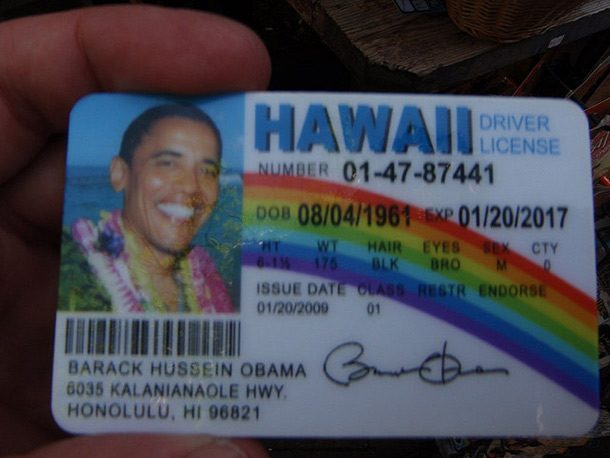 Source: http://www.mtv.com/news/1998398/fake-id-bouncers/
Source: http://www.mtv.com/news/1998398/fake-id-bouncers/ Often lots of teenagers will buy fake IDs in large batches with the same state. If a ton of teenage girls from Hawaii are trying to get into a New York club, you’ll want to take a closer look at their IDs because the likelihood of that is very rare.
Laser Perforation
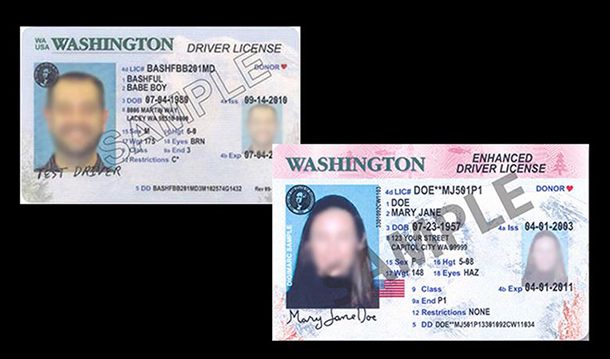 Source: https://www.driverslicenseguide.com/spot-fake-id-infographic.html
Source: https://www.driverslicenseguide.com/spot-fake-id-infographic.html Most state IDs have laser perforation where the laser makes tiny holes to form an image. Usually, the image is of the state it’s from. You can only see the image if you hold it up to a light. So when you hold up a flashlight to the card and the laser perforation doesn’t show up, it’s a fake.
Laser Image on Back
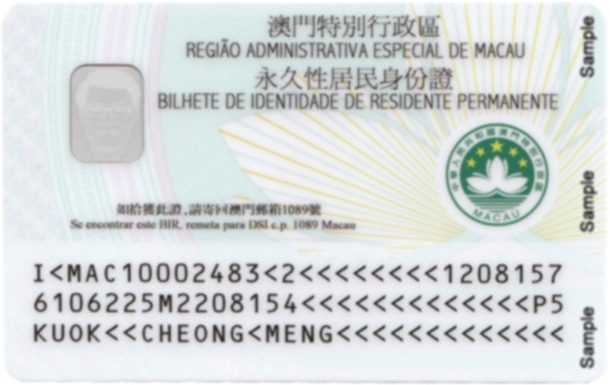 Source: https://www.driverslicenseguide.com/spot-fake-id-infographic.html
Source: https://www.driverslicenseguide.com/spot-fake-id-infographic.html On the back of some state IDs, there should be a laser engraved image that you can see if you tilt the ID back and forth. Not all have it, but it’s a good thing to check regardless.
Fine-line Patterns
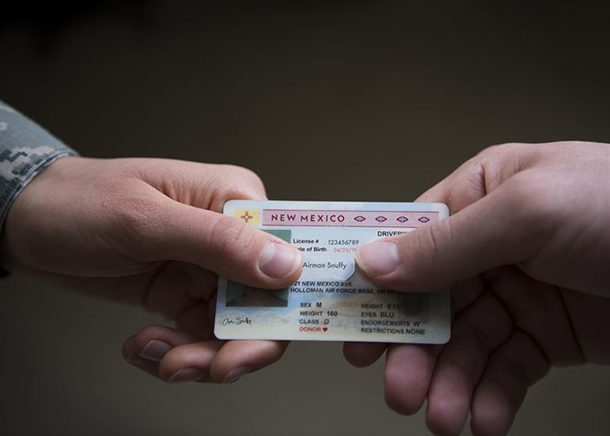 Source: https://www.driverslicenseguide.com/spot-fake-id-infographic.html
Source: https://www.driverslicenseguide.com/spot-fake-id-infographic.html Some IDs will have fine-line patterns that will often go in a wavy motion. States like Vermont use this for security, so you’ll have to remember which states use this for verification.
Thick Photo
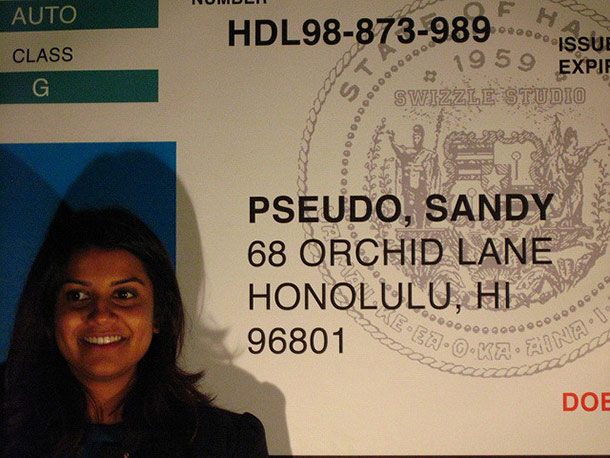 Source: https://www.nationalnotary.org/notary-bulletin/blog/2016/01/notary-guide-spotting-spot-fake-ids
Source: https://www.nationalnotary.org/notary-bulletin/blog/2016/01/notary-guide-spotting-spot-fake-ids Run your thumb across the photo image. If it feels thick, bumpy, or has an edge, then they likely pasted a new image overtop of the real image.
Ghost Image
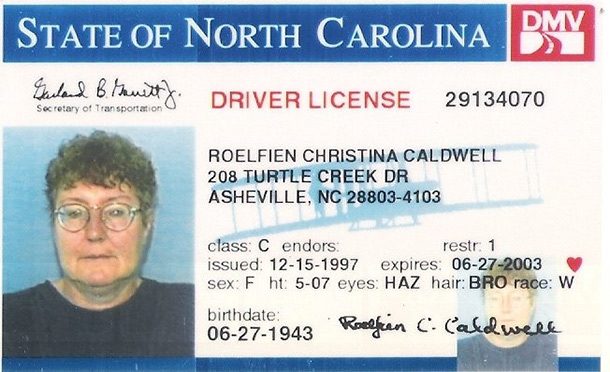 Source: https://www.driverslicenseguide.com/spot-fake-id-infographic.html
Source: https://www.driverslicenseguide.com/spot-fake-id-infographic.html Some IDs will have a ghost image of the existing photo off to the side of the larger photo. Obviously, if that ghost image isn’t the same as the larger image, something is up. Not all IDs, of course, have that ghost image.
Overlay
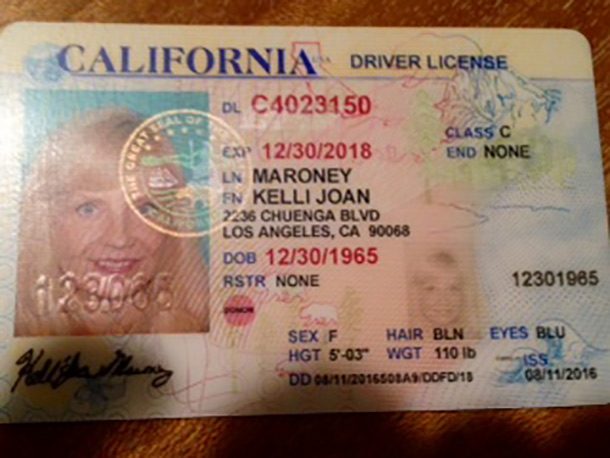 Source: https://www.driverslicenseguide.com/spot-fake-id-infographic.html
Source: https://www.driverslicenseguide.com/spot-fake-id-infographic.html Many real IDs will have an ultra-thin layering over the card that acts as a protective coating and an extra layer of security. Flash a light on it and you’ll see it. As an example, the state of Ohio uses this overlay.
Blurred Lettering
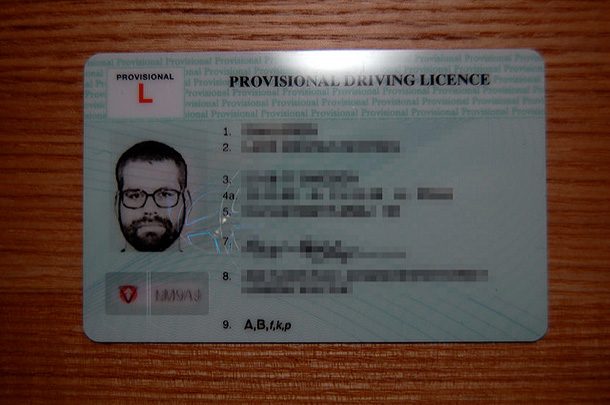 Source: https://www.nbwa.org/news/10-ways-spot-fake-id
Source: https://www.nbwa.org/news/10-ways-spot-fake-id Counterfeiters may be able to make the front look perfect but often just photocopy the back. Flip the card over and check for blurred lettering or signs of a photocopy.
UV Light
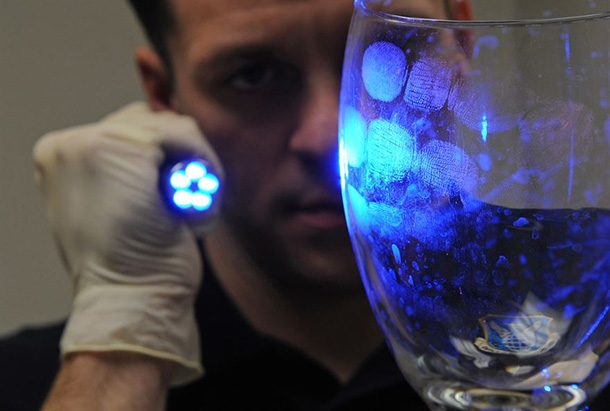 Source: https://www.wikihow.com/Spot-a-Fake-I.D.
Source: https://www.wikihow.com/Spot-a-Fake-I.D. Some state IDs have hidden images and features only visible with UV light. Flash a UV light over the card and you can quickly detect if the image is present or not. If it doesn’t show up, there’s a likelihood it’s fake.
Rainbow Printing
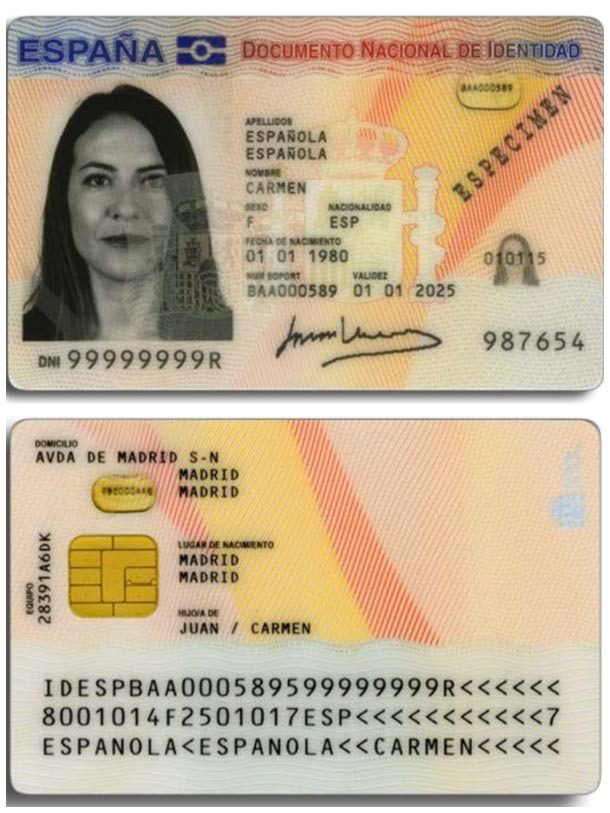 Source: https://www.driverslicenseguide.com/spot-fake-id-infographic.html
Source: https://www.driverslicenseguide.com/spot-fake-id-infographic.html Some states like Minnesota have rainbow printing on their driver’s license IDs. This printing is a controlled color shift in a linear fashion across the card. If it doesn’t show this color shift, it’s likely not a real ID.
Barcode
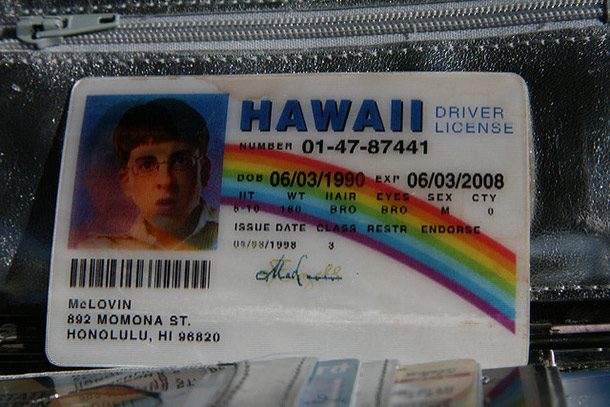 Source: https://www.wikihow.com/Spot-a-Fake-I.D.
Source: https://www.wikihow.com/Spot-a-Fake-I.D. With your smartphone, there are now apps available to scan the ID’s barcode. This will immediately give you the information of the card or tell you if it’s a fake.
Microprint
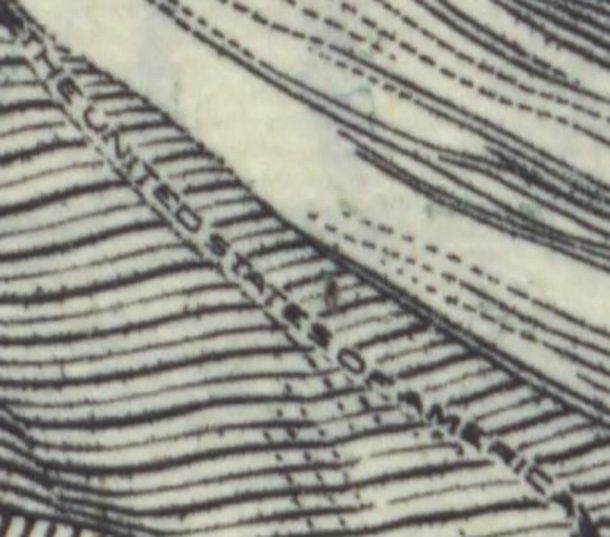 Source: https://www.wikihow.com/Spot-a-Fake-I.D.
Source: https://www.wikihow.com/Spot-a-Fake-I.D. With more sophisticated technology, counterfeiters have been able to make very realistic looking IDs. In turn, states have been using microprint to verify if an ID is real or not. It’s tricky to detect, but if you have a small pocket magnifying glass on hand, you can quickly see if the microprint is visible.
Tactile Laser Engraving
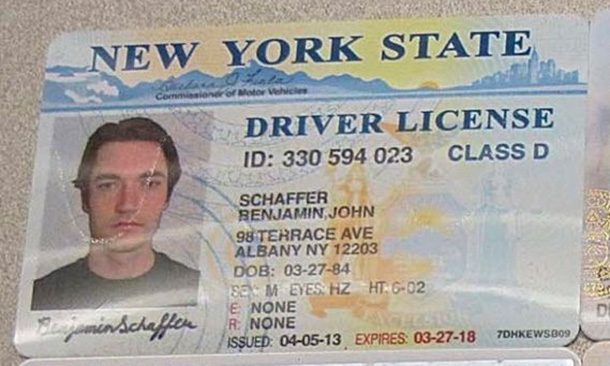 Source: http://www.nydailynews.com/news/politics/n-y-tips-bars-spying-bogus-ids-article-1.2331520
Source: http://www.nydailynews.com/news/politics/n-y-tips-bars-spying-bogus-ids-article-1.2331520 Some IDs, like New York State IDs, will have tactile laser engraving. Just run your thumb across the lettering on the ID number, birth date, and signature, and you should be able to feel it.
Polycarbonate Material
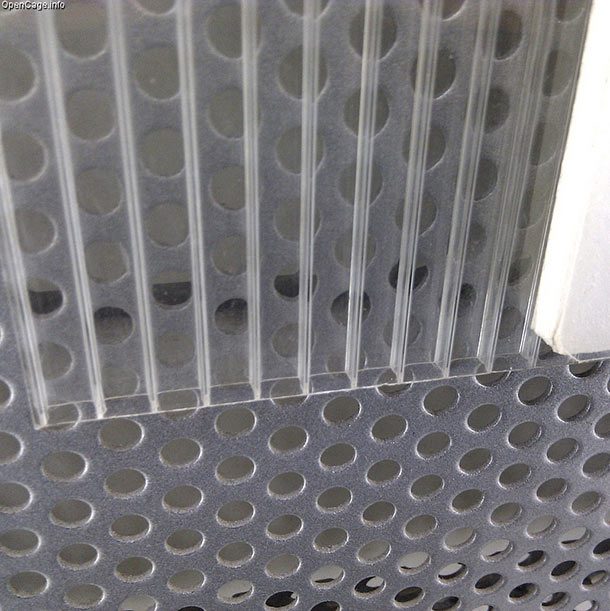 Source: http://www.nydailynews.com/news/politics/n-y-tips-bars-spying-bogus-ids-article-1.2331520
Source: http://www.nydailynews.com/news/politics/n-y-tips-bars-spying-bogus-ids-article-1.2331520 Many IDs today are being made out of a special material to distinguish itself from fakes. In New York, their IDs are made of polycarbonate material. If you drop it on a hard surface, it’ll make a unique metallic sound.
Use the FEAR Method
 Source: https://billypenn.com/2015/04/09/philly-bouncers-bust-20-under-agers-a-night-how-to-spot-and-fight-fake-ids/
Source: https://billypenn.com/2015/04/09/philly-bouncers-bust-20-under-agers-a-night-how-to-spot-and-fight-fake-ids/ Okay, we’ll be honest, that was a lot to remember. When in doubt, you can follow these simple guidelines that the state of Pennsylvania calls the FEAR method. 1. Feel for glue lines, bumpy surfaces, or pin holes. 2. Examine for holograms or lettering on the reverse side. 3. Ask about basic information on the card. 4. Return it if you’re satisfied they met the requirements.



























